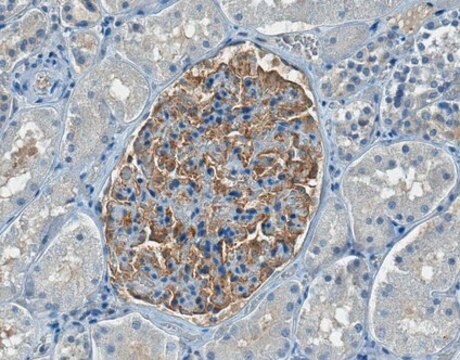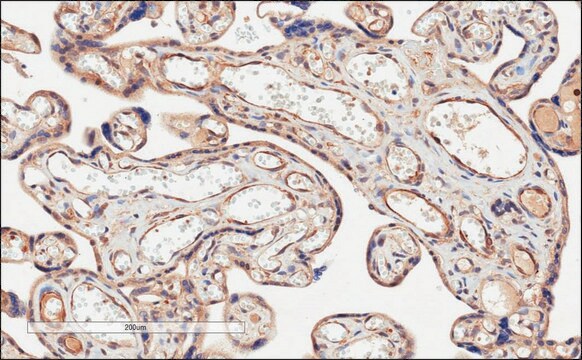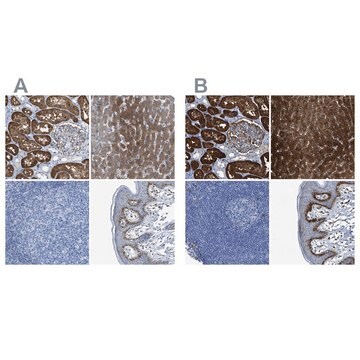SAB5900202
Alpaca Anti-PD-L1, recombinant single domain Antibody
Recombinant Alpaca(VHH) Nano antibody
Synonym(s):
B7-H, B7H1, PD-L1, PDCD1LG1, PDL1
About This Item
Recommended Products
biological source
alpaca
Quality Level
recombinant
expressed in E. coli
conjugate
unconjugated
antibody form
affinity purified VHH antibody
clone
PL03, monoclonal
Assay
>95% (SDS-PAGE)
form
lyophilized solid
mol wt
14.4 kDa
~ 15-18 kDa (SDS PAGE under reducing condition)
purified by
immobilized metal affinity chromatography (IMAC)
species reactivity
human, (Cynomolgus macaques)
concentration
1 mg/mL
technique(s)
ELISA: 1:10000-1:100000
flow cytometry: 1:50-1:100
immunofluorescence: 1:200-1:800
immunohistochemistry: 1:200-1:800
western blot: 1:1000-1:3000
color
colorless
pH
( in PBS, pH 7.4)
isotype
VHH
Protein ID accession no.
UniProt accession no.
shipped in
ambient
storage temp.
2-8°C
target post-translational modification
unmodified
Gene Information
human ... CD274(29126)
General description
Single-domain antibody (sdAb), also called nano-antibody, is the variable region isolated from the antigen-binding variable domain (VHH) of camelid heavy-chain-only antibody. It lacks light chains and a first constant domain(CH1). This configuration confers a number of unique advantages over conventional monoclonal antibodies. The small size of just 15 kDa (2~4 nm), single-domain antibody is the smallest antigen-binding fragment that can easily penetrate tissues, allowing them to bind epitopes that are inacessible to conventional antibodies. The small size and monovalency makes it a superior tool in microsopy. These single-domain antibodies offer superior chemical (wide variety of pH, urea, etc) and thermal stability and increased solubility than conventional antibodies. All our antibodies are tested to ensure the highest level of specificity, sensitivity and reproducibility.
Specificity
Immunogen
Application
Packaging
Physical form
Reconstitution
Storage and Stability
Other Notes
Storage Class Code
12 - Non Combustible Liquids
WGK
WGK 1
Flash Point(F)
Not applicable
Flash Point(C)
Not applicable
Regulatory Listings
Regulatory Listings are mainly provided for chemical products. Only limited information can be provided here for non-chemical products. No entry means none of the components are listed. It is the user’s obligation to ensure the safe and legal use of the product.
JAN Code
SAB5900202-100UG:
SAB5900202-50UG:
Certificates of Analysis (COA)
Search for Certificates of Analysis (COA) by entering the products Lot/Batch Number. Lot and Batch Numbers can be found on a product’s label following the words ‘Lot’ or ‘Batch’.
Already Own This Product?
Find documentation for the products that you have recently purchased in the Document Library.
Our team of scientists has experience in all areas of research including Life Science, Material Science, Chemical Synthesis, Chromatography, Analytical and many others.
Contact Technical Service






